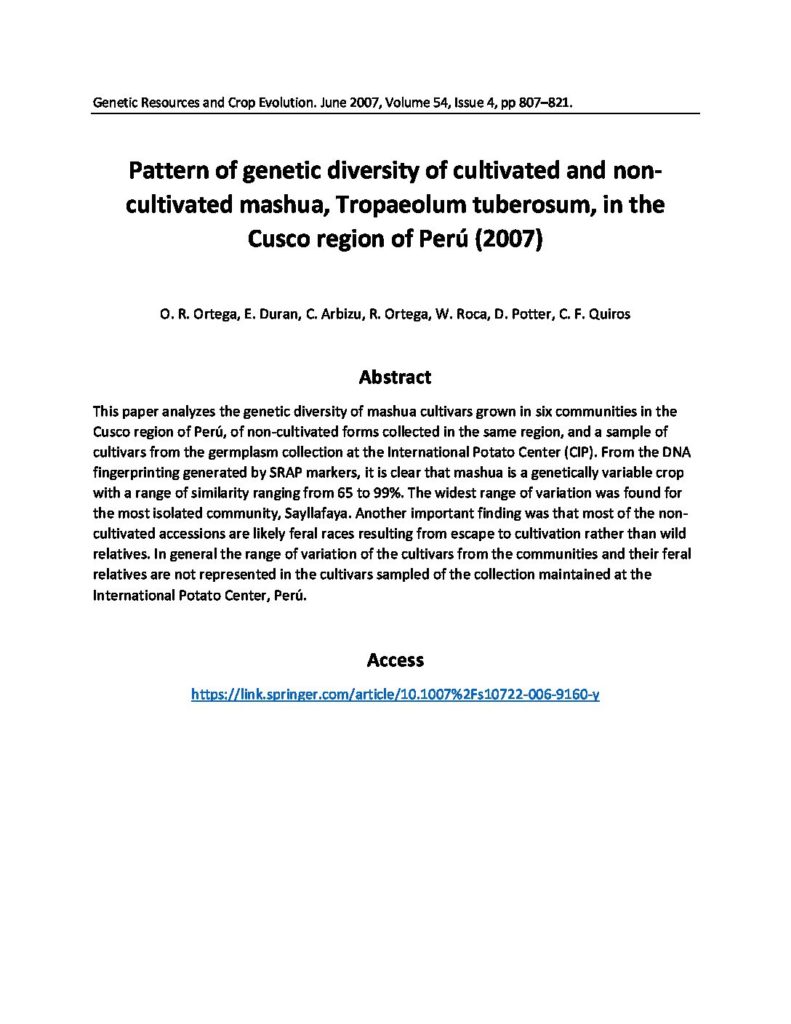Pattern of genetic diversity of cultivated and non-cultivated mashua, Tropaeolum tuberosum, in the Cusco region of Peru
Abstract
This paper analyzes the genetic diversity of mashua cultivars grown in six communities in the
Cusco region of Peru´, of non-cultivated forms collected in the same region, and a sample of cultivars
from the germplasm collection at the International Potato Center (CIP). From the DNA fingerprinting
generated by SRAP markers, it is clear that mashua is a genetically variable crop with a range of similarity ranging from 65 to 99%. The widest range of variation was found for the most isolated community, Sayllafaya. Another important finding was
that most of the non-cultivated accessions are likely feral races resulting from escape to cultivation
rather than wild relatives. In general the range of variation of the cultivars from the communities and
their feral relatives are not represented in the cultivars sampled of the collection maintained at the
International Potato Center, Peru´.

